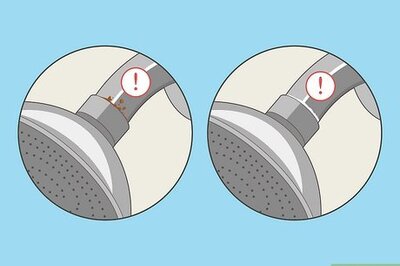
views
The Reserve Bank of India is pivotal in ensuring the country’s financial stability. Its monetary policies have far-reaching consequences on various industries. One domain that frequently experiences the impact of the central bank’s policies is the world of home loan interest rates. With the RBI preparing to disclose its forthcoming monetary policy, borrowers, potential homebuyers, and existing homeowners eagerly anticipate its impact on their loan expenses.
Before we explore the details of the RBI’s monetary policy, it’s essential to take a quick look at the current economic landscape of India that’s dominating right now. Following the global pandemic, the Indian economy has been on the recovery path, although the indicators are showing mixed signals. Inflation, a significant factor in devising RBI policies, has been somewhat unstable and remains a concern for the apex bank. The consumer price index (CPI) inflation has occasionally exceeded the RBI’s desired range of between 4-6%, primarily driven by fuel and food prices.
However, there are indications that the economy is showing resilience in terms of economic growth. Despite facing global economic uncertainties, geopolitical tensions, and fluctuating global commodity prices, the GDP growth is rebounding. This can be attributed to improving employment rates and increased industrial output, which gives rise to a cautiously optimistic outlook for the future.
Historical Context and Expected Monetary Policy Decisions
In the past, the Reserve Bank of India (RBI) has utilized its monetary policy tool, specifically the repo rate, to manage inflation and stabilize the economy. When the RBI raises the repo rate, borrowing becomes more expensive, while a decrease in the repo rate results in lower interest rates for borrowers. As the RBI prepares for its upcoming monetary policy announcement, several factors are at play. Industry experts anticipate a cautious approach aimed at striking a balance between controlling inflation and supporting economic growth. With the upcoming election results tomorrow and some inflationary pressure, there is a strong likelihood of a moderate increase in the repo rate to anchor inflation expectations.
Potential Impact on Home Loan Rates
The potential effect on home loan rates may not be entirely straightforward. The Reserve Bank of India (RBI) has a strong focus on maintaining economic growth, so a balanced approach with a slight increase in rates could be possible.
Implications on Home Loan Interest Rates
When it comes to implications on home loan interest rates, the following points are expected to influence home buyers and borrowers:
▪ Potential Increase in Home Loan Rates
If the Reserve Bank of India (RBI) chooses to raise the repo rate, even by a small margin, there is a strong possibility that home loan rates will be given a boost, resulting in higher borrowing expenses. These increased costs will ultimately be passed on to consumers. Consequently, individuals with existing floating-rate loans will experience an uptick in their monthly installments, while new borrowers will have to contend with higher interest rates.
▪ Impact on Housing Demands
Higher home loan rates could create a dent in the overall demand for residential real estate. Prospective homebuyers might delay their home-purchase decisions, waiting for loan conditions to become more favorable. This could eventually slow down the real estate market, which has been showing signs of recovery post pandemic.
▪ Increased Competition Among Banks
Banks might undergo a complete overhaul of their operations. In order to retain and attract more customers, banks might engage in more competition in their home loan offerings. This can include offerings like lower interest rates than competitors, even if it implies a marginal reduction; waiving processing fees and offering additional incentives. Borrowers should ideally thoroughly explore and negotiate for the best rates.
▪ Shift Towards Fixed-Rate Loans
In a situation where interest rates are on a rise, borrowers may consider turning their attention towards fixed-rate home loans as a way to protect themselves from future rate increases. might shift focus towards fixed-rate home loans in an attempt to safeguard themselves from rate hikes in the future.Although fixed-rate loans typically come with higher initial interest rates compared to floating rates, they offer the advantage of predictability and stability when it comes to paying off EMIs.
It is important for both existing and new borrowers to carefully review their home loans, taking into account factors such as processing fees and EMIs. Opting for a pre-approved loan at current rates could be a wise decision in order to secure lower interest rates. One possibility is to switch to a fixed-rate loan, but this should only be done after conducting a thorough analysis and gaining a clear understanding of the terms involved.
The Final Word
The RBI’s upcoming monetary policy announcement will undoubtedly have crucial implications for rates of interest in home loans. Despite the possibility of a rate increase due to existing inflationary pressures, the central bank’s ultimate verdict will strive to strike a delicate balance between economic stability and growth. It is imperative that homebuyers and borrowers stay well-informed about all the latest developments and take a proactive approach to managing their financial portfolios. Armed with a thorough comprehension of the potential consequences of the RBI’s decisions, individuals can make more informed decisions for their own benefit.
Written By – Atul Monga – CEO & Co-founder, BASIC HOME LOAN




















Comments
0 comment